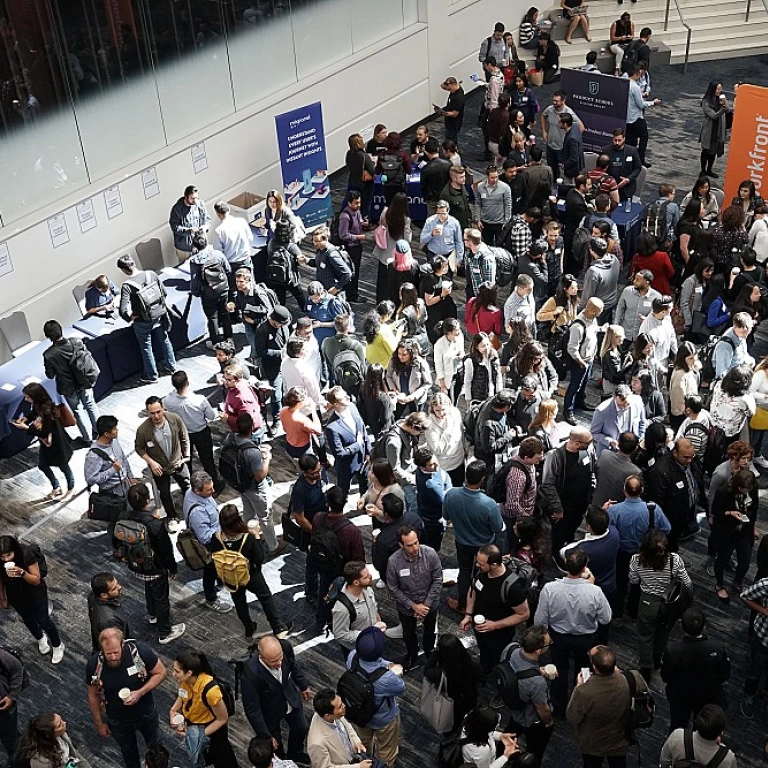
The Concept of Employee Flight Risk
Exploring the Concept of Employee Flight Risk
Understanding employee flight risk is crucial for any organization striving to stabilize its workforce, mainly to reduce employee turnover and improve retention strategies. It's not uncommon to see highly talented professionals seeking better opportunities elsewhere, often leaving their current job for numerous reasons including lack of engagement, inadequate development opportunities, or an unfavorable work-life balance. When we talk about flight risks, we're focusing on the likelihood of employees leaving the organization. This departure not only impacts the company's performance but also hampers team dynamics and incurs significant costs. The concept of assessing employee flight risk hinges on recognizing signs that might predict an employee's decision to leave soon. Such predictions can include monitoring an employee’s job satisfaction levels, their engagement with the company, and their career development prospects within the organization. Moreover, retaining top talent is one of the primary concerns of any Human Resources department. Implementing effective retention strategies that cater to employee's work-life preferences and career development is essential for reducing flight risks. By tapping into these insights, organizations can enhance employee engagement which is fundamental in minimizing turnover rates. For those looking to delve deeper into how HR AI technology is transforming the landscape in employee engagement and retention, this blog on HR AI technology's impact provides a comprehensive overview.How AI Identifies Flight Risk Employees
Utilizing Artificial Intelligence to Detect Flight Risks
The use of artificial intelligence in evaluating flight risks within an organization signifies a shift towards more proactive risk assessment. Through various AI-driven algorithms, companies can identify patterns that signify potential risks associated with employees considering leaving their job. These advanced technologies empower HR departments with the ability to predict which employees might depart based on a multitude of data points.
AI systems analyze historical data such as job satisfaction surveys, employee engagement metrics, and performance reviews to detect early warning signs of employee flight. By monitoring changes in work life balance, decreased engagement, and the perceived lack of development opportunities, organizations can gain insights into employee retention strategies that may need adjustment.
Moreover, AI can pinpoint high performing individuals who might be at a higher risk of leaving due to unaddressed career plateaus or insufficient career development options. Using this intelligence, HR teams can work on personalized retention strategies, offering tailored development opportunities to engage top talent and reduce turnover.
AI's ability to process vast amounts of data continuously allows for ongoing monitoring of employee sentiment across different teams and departments. Real-time data analysis brings to light the immediate challenges that management can address to reduce employee turnover and foster a more inclusive and supportive work environment.
As organizations grapple with high turnover rates, integrating AI into their HR processes becomes indispensable. By understanding the intricacies of how AI can help in identifying risk employees early, companies can better prepare for future HR challenges and enhance overall employee retention.
Benefits of Using AI for Flight Risk Management
Advantages of Leveraging AI in Managing Employee Departure
Artificial intelligence offers a plethora of benefits when it comes to addressing the challenge of employee flight risk within an organization. Companies are increasingly turning to AI-driven solutions to enhance employee retention strategies and reduce employee turnover. These advanced systems are bringing noticeable transformations in workplaces. Firstly, AI provides significant insights into employee engagement levels by analyzing various data points such as performance reviews, feedback channels, and even social media activity. This data-driven approach enables managers to identify flight risks early and implement strategies to improve employee satisfaction and work-life balance. Moreover, AI can personalize career development opportunities for employees by identifying their strengths, weaknesses, and career aspirations. This tailored approach encourages top talent to remain with the company by offering them a path that aligns with their career goals and development aspirations. By improving job satisfaction and promoting personal growth, employees feel more valued and less likely to entertain thoughts of leaving. Additionally, AI systems facilitate enhanced risk assessment by predicting which employees are most likely to become disengaged based on patterns identified in their work performance and engagement data. Proactively addressing these factors allows organizations to implement timely interventions such as targeted coaching or offering new roles within the company that better match the employee's skills and interests. The implementation of AI in managing employee flight risk not only aids in maintaining a cohesive and motivated team but also ensures that organizations maintain their competitive edge by retaining their high performers. In doing so, companies can not only cut down on turnover-related costs but also foster a positive organizational culture that attracts and retains the best talent in the industry. For more comprehensive insights, enhancing employee feedback with 360 survey questions can further empower HR teams to fine-tune their retention strategies effectively, ensuring that the workforce remains engaged and satisfied in the long term.Challenges in Implementing AI for HR
Obstacles in the Path of AI Implementation in Human Resources
Implementing AI in Human Resources involves significant challenges, despite its potential to identify employee flight risks effectively. To begin with, data privacy concerns are particularly prominent as employee data must be handled with utmost confidentiality. An organization has to ensure compliance with necessary data protection regulations to maintain trust amongst employees. Another issue is integration. Incorporating AI systems into existing HR processes can sometimes clash with established workflows, causing initial resistance from the HR team. Human factors like adaptation to new technologies can often be just as challenging as the technical complexities themselves. Moreover, the learning curve associated with new AI tools demands adequate training and development opportunities for HR personnel. Additionally, AI technologies rely heavily on quality data to function effectively. Inaccurate or biased data may result in flawed risk assessments, potentially leading to misguided retention strategies. Therefore, ensuring data accuracy and unbiased algorithms forms a foundation necessary for the credible functioning of AI in HR. The cost of AI technology is another factor. Implementing large-scale AI solutions could strain budgets, more so for smaller companies. However, the long-term investment in retaining top talent and reducing employee turnover often justifies these initial expenses. Lastly, human-robot interaction can raise concerns regarding job satisfaction and work life balance among employees. Companies need to ensure AI complements human effort rather than replacing jobs, thus promoting employee engagement. Employees must feel that these systems enable their career development and not hinder it. Faced with these challenges, companies that successfully implement AI in HR often do so by incrementally deploying AI tools, fostering an open dialogue with employees, and continuously engaging in performance evaluations to refine their strategies over time.Case Studies: AI in Action
AI Implementation: Real-World Success Stories
To appreciate AI's role in managing flight risks, it's crucial to look at how companies have successfully integrated this technology into their HR operations. These real-world examples showcase innovative strategies and results.One organization successfully utilized AI by developing a robust system for monitoring employee engagement and job satisfaction. By analyzing data indicators such as employee feedback, participation in work activities, and utilization of development opportunities, the company was able to pinpoint risk employees likely to leave. This allowed for targeted retention strategies, significantly reducing employee turnover.
Another notable case involves a tech company that employed AI to assess career development needs as part of their efforts to retain top talent. AI-driven insights helped the HR team identify key barriers to job satisfaction, allowing them to create more engaging career paths and enhancing employee retention. This approach not only improved employee satisfaction but also boosted overall performance within teams.
In the healthcare industry, a large hospital system used AI for risk assessment and flight risk prediction. By examining patterns related to work life balance and long-term career aspirations, they crafted personalized engagement plans. As a result, this helped retain valuable talent in a highly competitive field.
These examples illustrate how AI not only identifies risk but also supports developing proactive strategies to improve employee experiences and organizational outcomes. The potential for further evolution in AI tools ensures that HR can continuously adapt to new challenges.












